Idea by
Pietro Iacobucci & Serena Amatulli
Call for ideas 2017
Future Ljubljana
Future Ljubljana
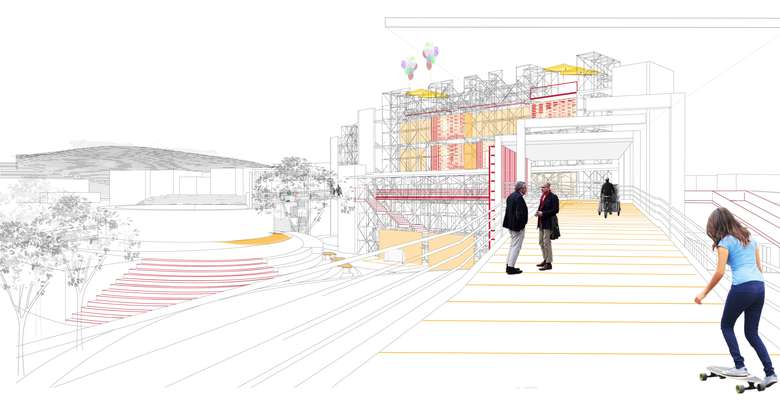
The project topic was to bring together two fictitious communities by creating a network of public spaces aimed at generating active urban environments and business activities. This can be reached by reconfiguring the interstices of the city with micro-interventions. At the intersection of two main axes, a raised pedestrian and cycle path is built on different levels to connect three crucial points of the city. The combine footbridge and bicycle path across the railway tracks and consisted of a slender steel spaceframe supporting a pathway made of recycled composite material. The path approaches where made more inviting by five small themed hills, each of which characterized a segment of the community. Furthermore the path joins some other structures it clings to, becoming an integral part of them.
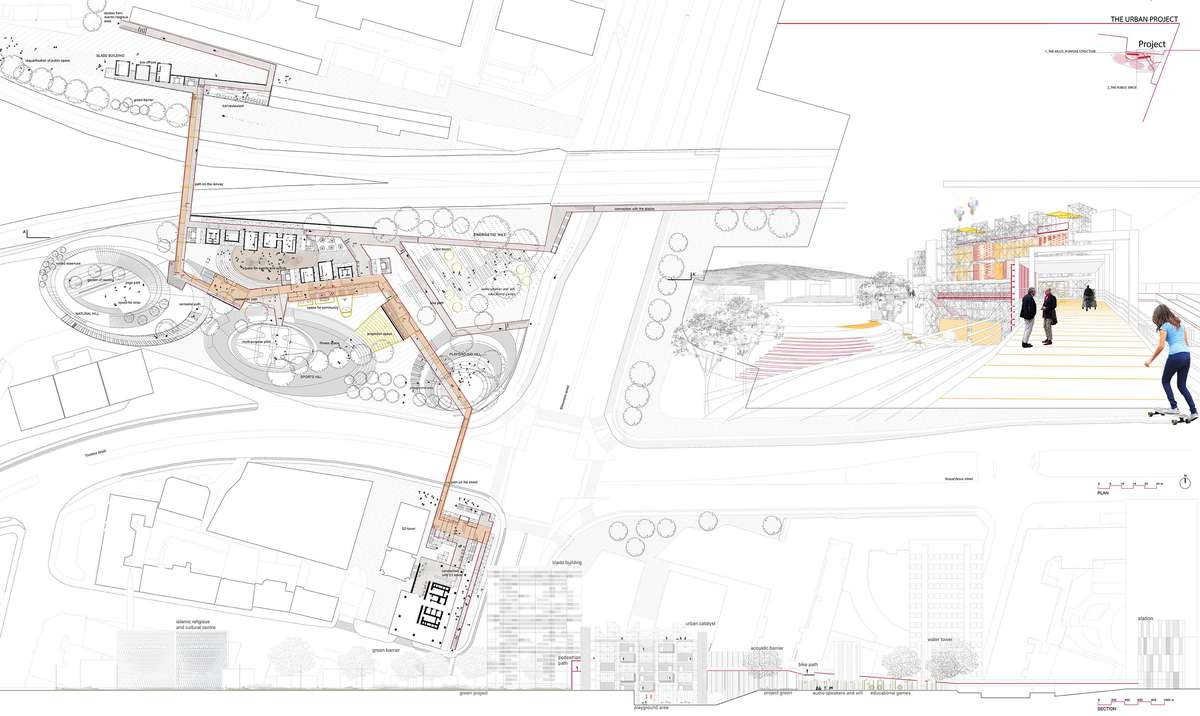
The aim of the project is a raised pedestrian and cycle path, built on different levels to connect three crucial points of the city and composed by tree different arms.
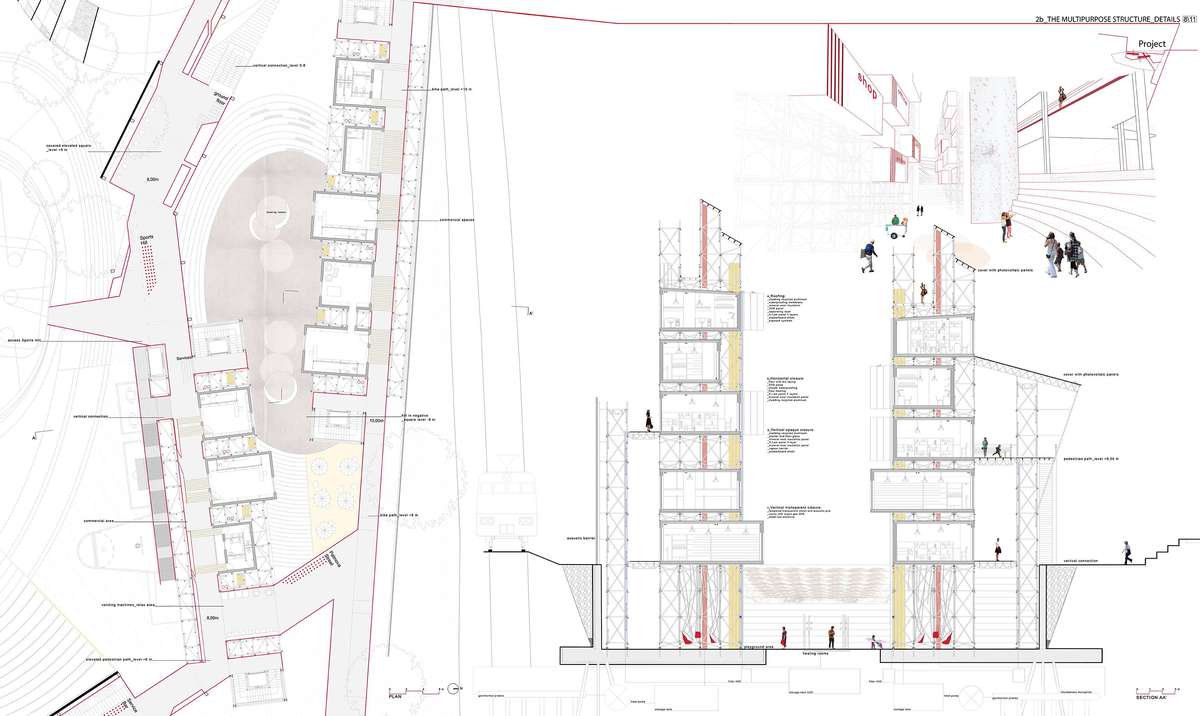
The combine footbridge and bicycle path bring together two fictitious communities that had be separated by railway tracks. This raised path joins some other scaffolding structures (urban cataysts)it clings to, becoming an integral part of them.
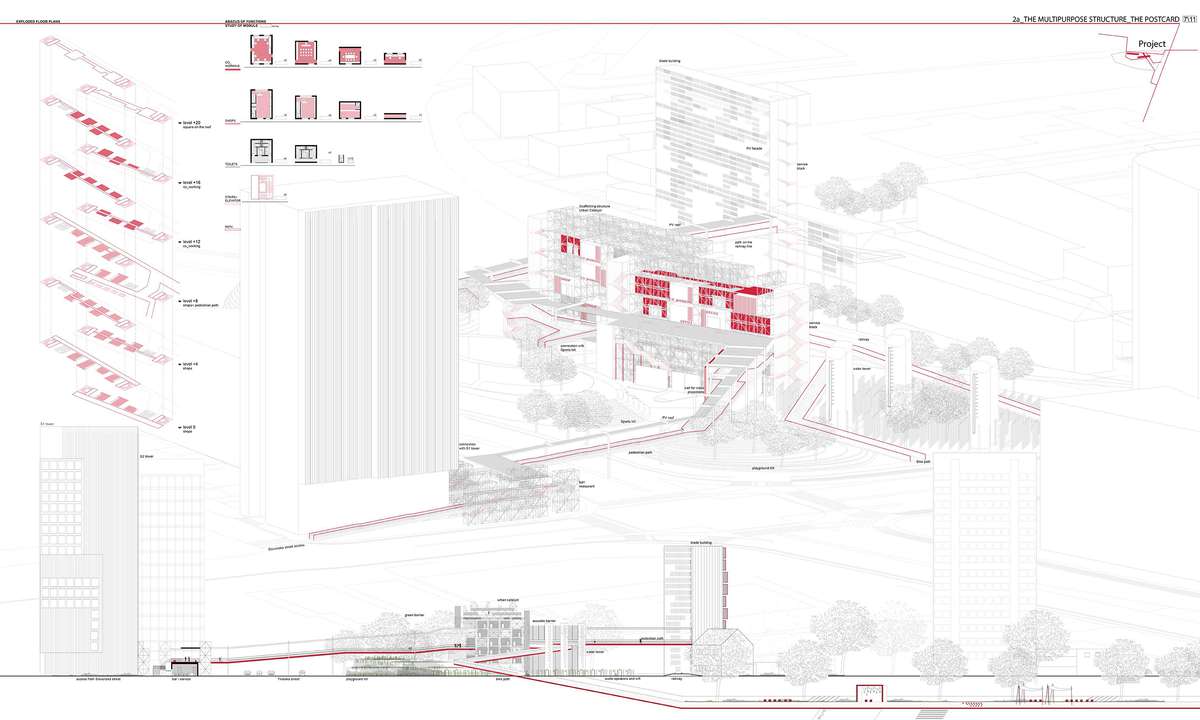
The path consists in a integration of parts: urban catalysts, space for community, descent systems , boxes for shops, offices and co-working by creating a network of public spaces aimed at generating active urban environments and business activities.
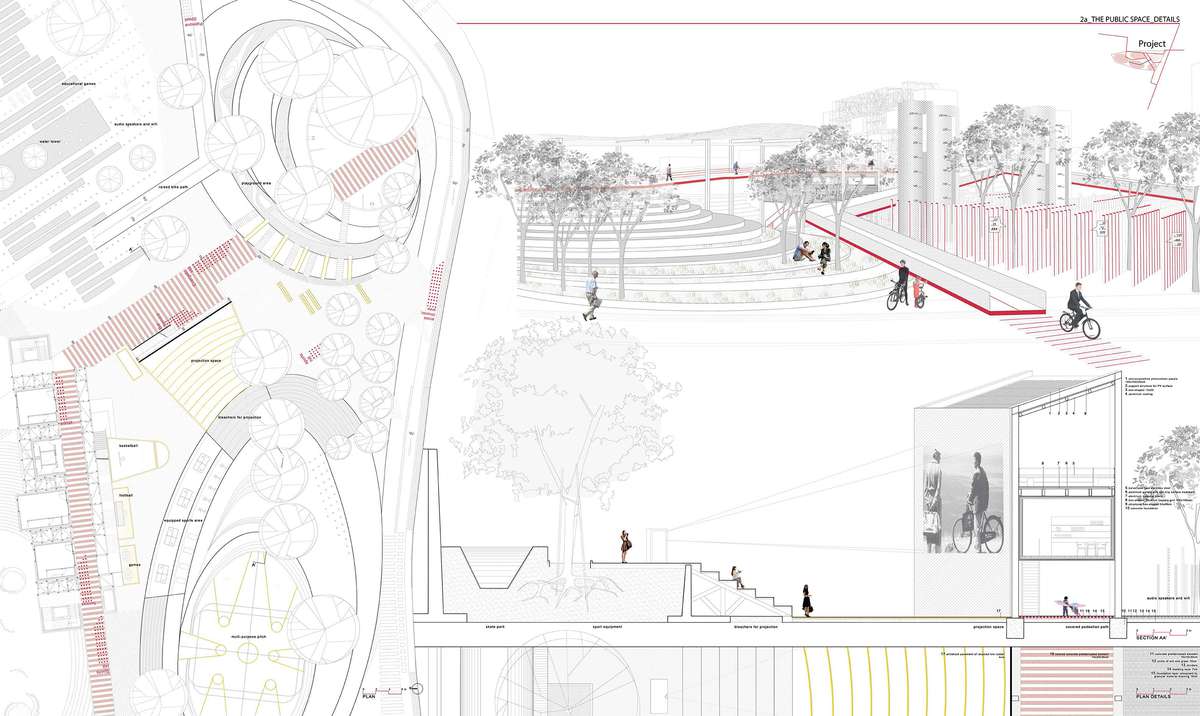
The bridge approaches where made more inviting by five small themed hills, each of which characterized a segment of the community. The design of the public space creates a new urban landscape.
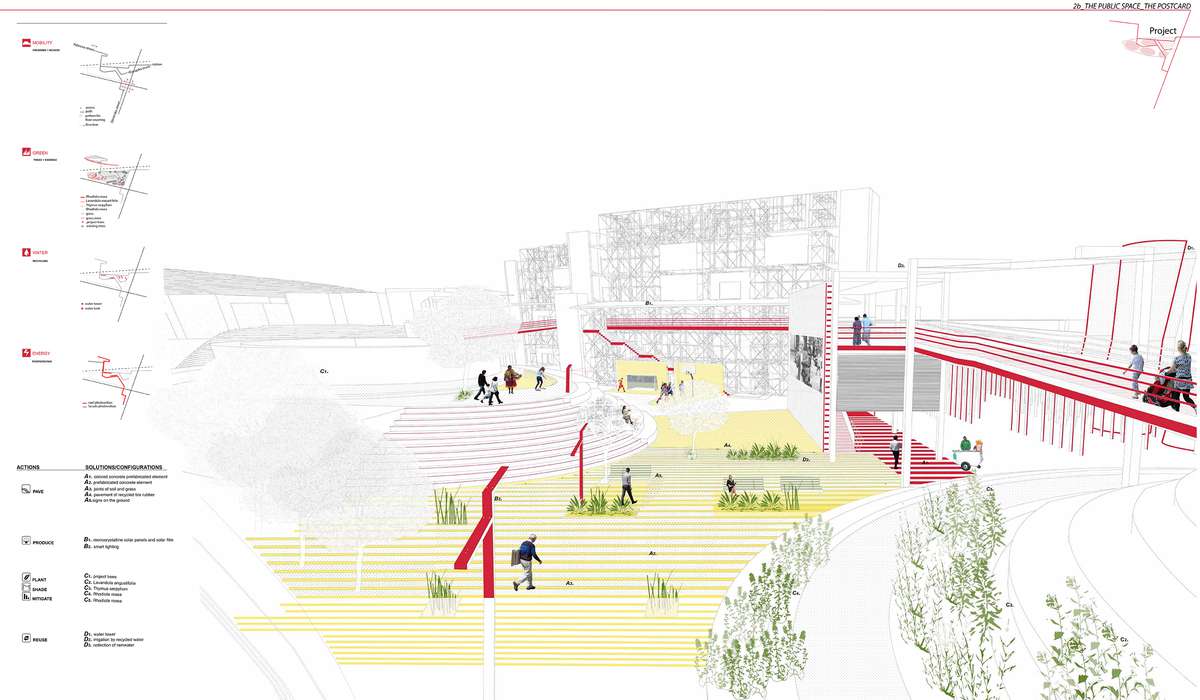
The poster of the public space: a dialogue between green areas and flexible installations.
Future Ljubljana
Future Ljubljana

The project topic was to bring together two fictitious communities by creating a network of public spaces aimed at generating active urban environments and business activities. This can be reached by reconfiguring the interstices of the city with micro-interventions. At the intersection of two main axes, a raised pedestrian and cycle path is built on different levels to connect three crucial points of the city. The combine footbridge and bicycle path across the railway tracks and consisted of a slender steel spaceframe supporting a pathway made of recycled composite material. The path approaches where made more inviting by five small themed hills, each of which characterized a segment of the community. Furthermore the path joins some other structures it clings to, becoming an integral part of them.
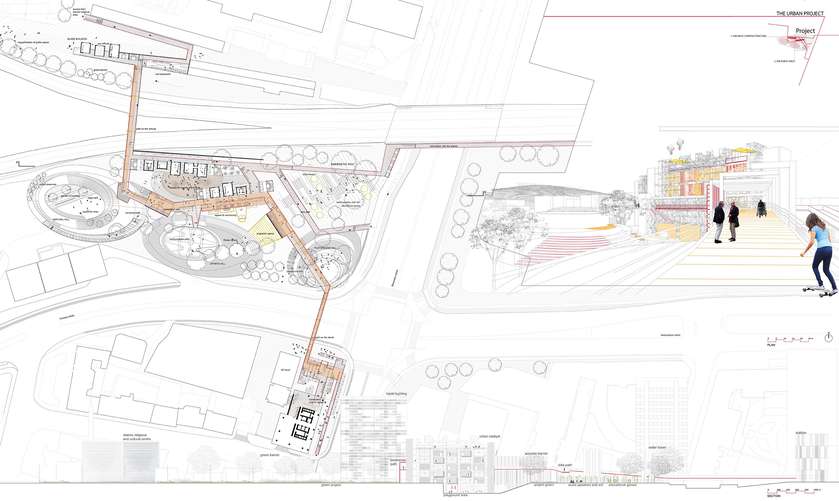
The aim of the project is a raised pedestrian and cycle path, built on different levels to connect three crucial points of the city and composed by tree different arms.
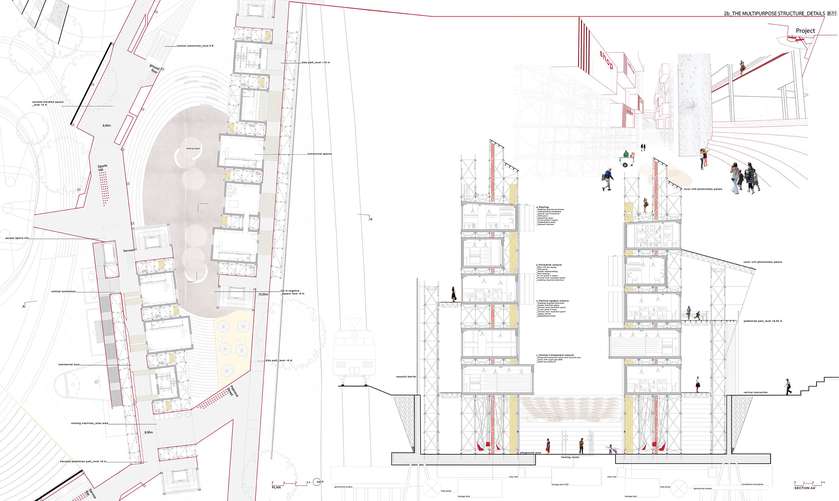
The combine footbridge and bicycle path bring together two fictitious communities that had be separated by railway tracks. This raised path joins some other scaffolding structures (urban cataysts)it clings to, becoming an integral part of them.
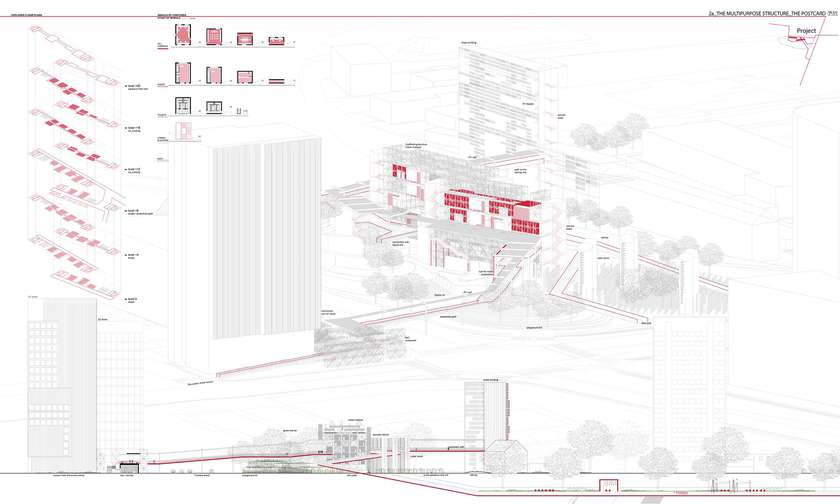
The path consists in a integration of parts: urban catalysts, space for community, descent systems , boxes for shops, offices and co-working by creating a network of public spaces aimed at generating active urban environments and business activities.

The bridge approaches where made more inviting by five small themed hills, each of which characterized a segment of the community. The design of the public space creates a new urban landscape.
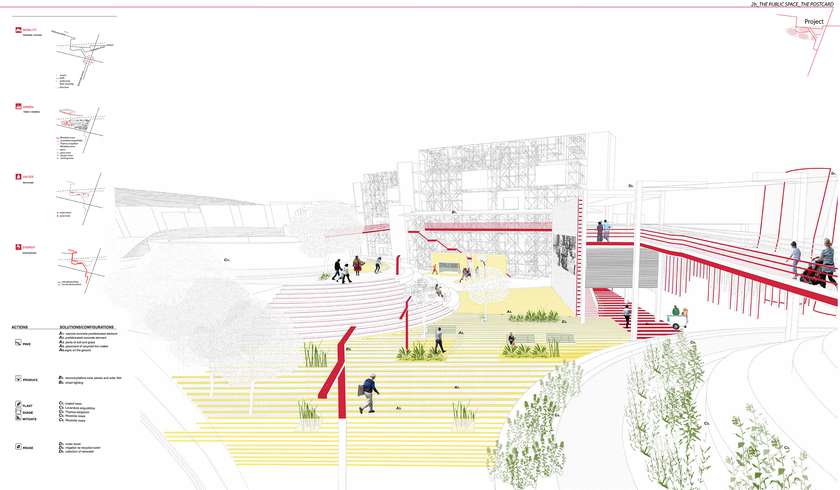
The poster of the public space: a dialogue between green areas and flexible installations.